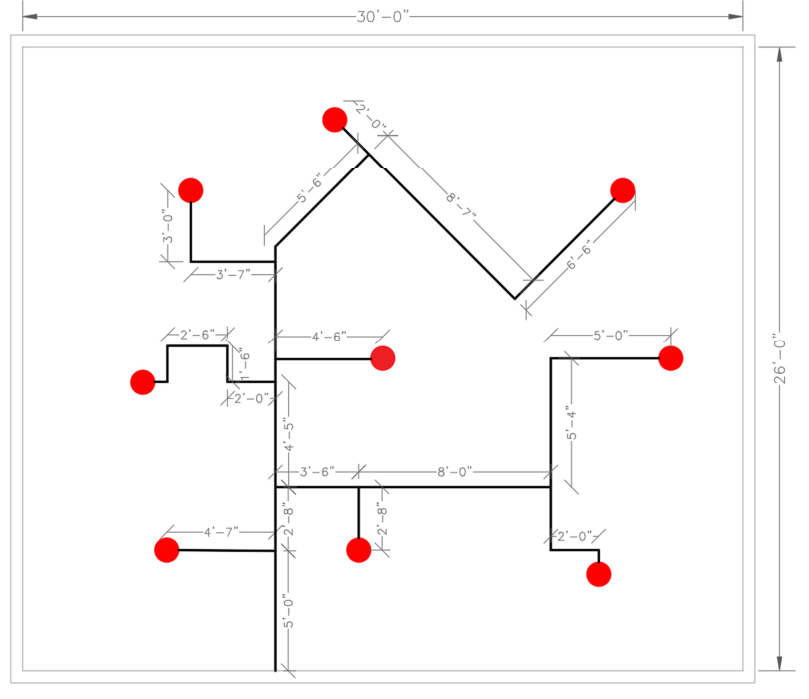Predicting the precise coverage pattern of a fire sprinkler is challenging, as it depends on factors such as fire conditions, orifice size, deflector shape, and water discharge pressure. At lower pressures, the coverage area often approximates a circle, while at higher pressures, it tends to become more elliptical.
However, NFPA 13 (2025 Edition, Section 9.5.2.1) requires that the coverage area be assumed as a rectangle. This assumption increases flexibility in sprinkler placement by not requiring fixed spacing between sprinklers.
Nevertheless, determining the
coverage area can be complicated in some cases.
The S × L method is the standard approach for determining a sprinkler’s coverage area.
Per NFPA 13, the protection area per sprinkler (As) is calculated as follows, assuming a rectangular (or square,if S = L) coverage area with the sprinkler at its center:
(1) Along branch lines as follows:
(a) Determine distance between sprinklers (or to wall or obstruction in the case of the end sprinkler on the branch line) upstream and downstream
(b) Choose the larger of either twice the distance to the wall or the distance to the next sprinkler
(c) Define dimension as ‘S’
(2) Between branch lines as follows:
(a) Determine perpendicular distance to the sprinkler on the adjacent branch line (or to a wall or obstruction in the case of the last branch line) on each side of the branch line on which the subject sprinkler is positioned
(b) Choose the larger of either twice the distance to the wall or obstruction or the distance to the next sprinkler
(c) Define dimension as ‘L’
This method relies on piping routes, making it difficult to determine S and L when piping is irregularly shaped or sprinklers are arranged non-uniformly, as shown in Figure 1

To read more Please Click Here.
Join our newsletter with a single click to get
latest industry reports and enjoy exclusively freebies.
Dubai Silicon Oasis, DDP, Building A2, UAE
Email: [email protected]
Sales:
+971 58-572-5181
+1 512-761-6063
Support:
+1 619-722-5143
© Copyright 2024 | NSVSoft | All Rights Reserved.